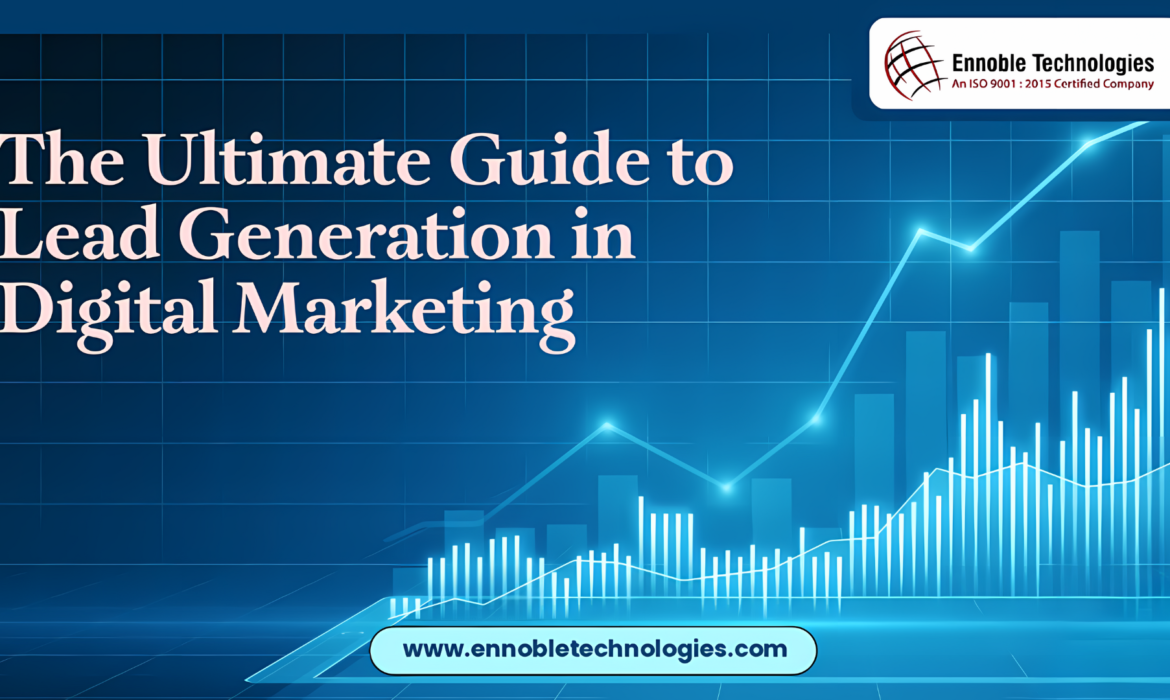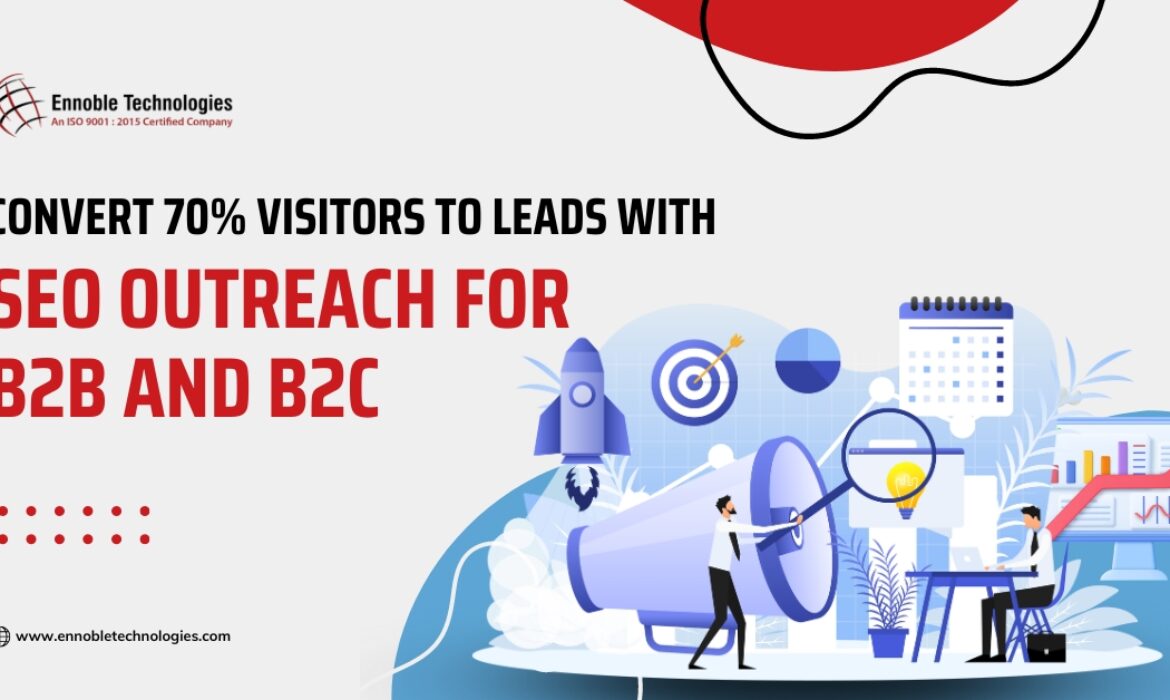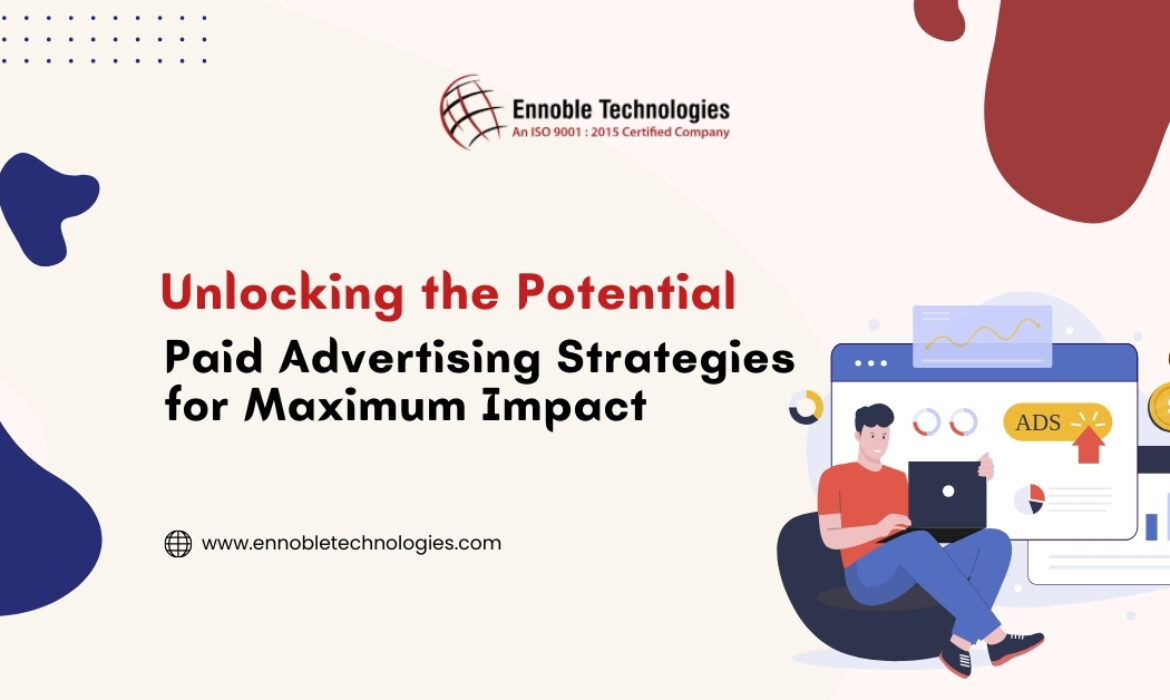The Ultimate Guide to Lead Generation in Digital Marketing
In today’s digital landscape, lead generation in digital marketing stands as a fundamental pillar of any successful marketing strategy. At Ennoble Technologies, we understand the importance of attracting and converting prospects into potential customers interested in your products or services. In this comprehensive guide, we delve into the strategies, tools, and best practices that drive effective lead generation in digital marketing.
Understanding Lead Generation
Lead generation in digital marketing marks the initiation of consumer interest or inquiry into products or services of a business. The ultimate goal is to nurture these leads through the sales funnel until they are ready to make a purchase decision. In digital marketing, lead generation is achieved through various channels and tactics, each tailored to engage and capture the attention of your target audience.
Key Strategies for Lead Generation
- Content Marketing: High-quality content remains the cornerstone of lead generation in digital marketing efforts. Content such as blogs, ebooks, whitepapers, and videos that address pain points and provide solutions helps attract and engage potential leads.
- Search Engine Optimization (SEO): Optimizing your website and content for search engines not only improves visibility but also drives organic traffic that can convert into leads. At Ennoble Technologies, we specialize in targeting relevant keywords and optimizing landing pages to maximize lead generation in digital marketing.
- Social Media Marketing: Leveraging platforms like Facebook, Instagram, LinkedIn, and Twitter allows businesses to engage directly with their audience, share valuable content, and capture leads through targeted advertising and organic interactions.
- Email Marketing: Despite being one of the oldest digital marketing techniques, email remains highly effective for lead nurturing. Ennoble Technologies designs personalized email campaigns that provide value and build trust, converting leads into loyal customers.
- Pay-Per-Click (PPC) Advertising: Paid search and display ads on platforms like Google Ads and social media channels can quickly generate leads by targeting specific demographics, interests, and behaviors of potential customers.
Tools for Lead Generation
- Lead Magnets: At Ennoble Technologies, we create compelling lead magnets such as ebooks, templates, free trials, and exclusive content to attract and capture potential leads.
- CRM Software: Our customized CRM solutions help businesses manage and track leads throughout the sales process, ensuring timely follow-ups and personalized communication.
- Marketing Automation: Ennoble Technologies implements automation platforms that streamline lead nurturing workflows, send automated emails, segment leads based on behavior, and score leads for optimal engagement.
- Analytics and Reporting: We utilize tools like Google Analytics to provide insights into website traffic, conversion rates, and lead generation in digital marketing metrics, enabling businesses to optimize their strategies for better results.
Best Practices for Effective Lead Generation
- Define Target Audience: At Ennoble Technologies, we conduct in-depth research to understand your ideal customer profile (ICP) and tailor lead generation strategies that address their specific needs and pain points.
- Create Compelling Offers: We develop irresistible offers that provide genuine value to your audience, encouraging them to willingly share their contact information and engage with your brand.
- Optimize Landing Pages: Our team designs clear and concise landing pages that align with your offers and compel visitors to take action, whether it’s signing up for a newsletter or downloading a resource.
- A/B Testing: Ennoble Technologies continuously tests different elements of lead generation in digital marketing campaigns, including headlines, images, CTAs, and forms, to optimize conversion rates and improve ROI.
- Lead Segmentation: We segment leads based on demographics, behavior, and engagement levels to deliver personalized content and offers that resonate with their interests, maximizing conversion opportunities.
Measuring Success
Effective lead generation in digital marketing is not just about quantity but also about quality. Key metrics Ennoble Technologies tracks include:
- Conversion Rate: The percentage of visitors who complete a desired action, such as filling out a form or downloading a resource.
- Cost per Lead (CPL): The amount spent on acquiring each lead through marketing efforts.
- Return on Investment (ROI): The revenue generated from leads compared to the cost of acquiring those leads.
Conclusion
Lead generation in digital marketing requires a strategic approach that combines compelling content, targeted outreach, and continuous optimization. By partnering with Ennoble Technologies, businesses can effectively attract, engage, and convert leads into loyal customers. Embrace innovation, monitor performance metrics, and adapt your strategies to stay ahead in the competitive digital landscape. Implement these strategies consistently and watch your lead generation in digital marketing efforts transform into sustainable business growth with Ennoble Technologies by your side.
Convert 70% visitors to leads with SEO Outreach for B2B and B2C
Introduction:
Imagine turning 70% of website visitors into engaged leads, simply by implementing the right SEO outreach strategies. Sounds impossible? It’s not – and we’ll show you how in this blog. In the dynamic realm of digital marketing, search engine optimization (SEO) outreach plays a pivotal role in both Business-to-Business (B2B) and Business-to-Consumer (B2C) sectors. This comprehensive guide explores the distinctive roles and significance of SEO outreach in driving visibility, credibility, and engagement for businesses targeting diverse audiences and markets.
—————————————————————————————————————————————————————–
What is B2B SEO?
B2B SEO involves optimizing your website and online presence to attract qualified business leads through organic search, leveraging targeted content and strategic outreach to cater to longer sales cycles and complex decision-making processes.
—————————————————————————————————————————————————————–
SEO Outreach in B2B Digital Marketing
In the competitive landscape of B2B digital marketing, SEO outreach stands out as a critical component for driving organic visibility, establishing authority, and generating high-quality leads. By implementing targeted outreach b2b strategies, building meaningful relationships, and continuously optimizing their approach, B2B marketers can unlock new opportunities for growth, differentiation, and success in their respective industries.
B2B Blogger Outreach Strategies: Building Authority and Relationships
Beyond standard Search engine optimization tactics, B2B outreach thrives on building genuine connections with bloggers and industry influencers. Here are key strategies to leverage:
1. Guest Blogging:
- Target relevant publications: Identify industry blogs, thought leader platforms, and online communities frequented by your target audience.
- Pitch valuable content: Offer unique insights, data-driven reports, or industry analyses relevant to their readers.
- Personalize your outreach: Don’t use generic templates. Research the editor’s interests and tailor your pitch to their specific audience.
- Build relationships: Don’t just see it as a one-time opportunity. Interact with their content, offer additional insights, and build long-term connections.
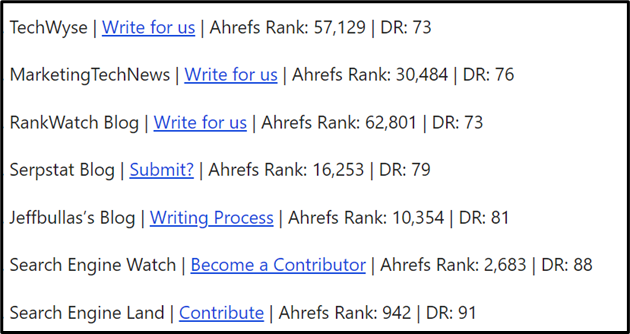
2. Influencer Marketing:
- Identify key influencers: Partner with industry experts, thought leaders, or niche bloggers who resonate with your target audience.
- Collaborate on valuable content: Co-create white papers, webinars, or podcasts addressing industry challenges and showcasing your expertise.
- Leverage their reach: Utilize their established audience to amplify your message and build brand awareness.
- Nurture authentic partnerships: Treat them as valued partners, not just marketing tools. Offer mutual benefits and respect their influence.
3. Create Shareable Content:
- Industry insights with a twist: Go beyond dry reports. Infographics, data visualizations, or interactive tools make complex information engaging.
- Problem-solving content: Address common pain points your target audience faces and offer practical solutions through blog posts, case studies, or guides.
- Leverage social media: Optimize content for different platforms and encourage sharing with relevant hashtags and calls to action.
- Run targeted contests: Partner with relevant bloggers to incentivize content creation and social sharing around your brand or industry topic.
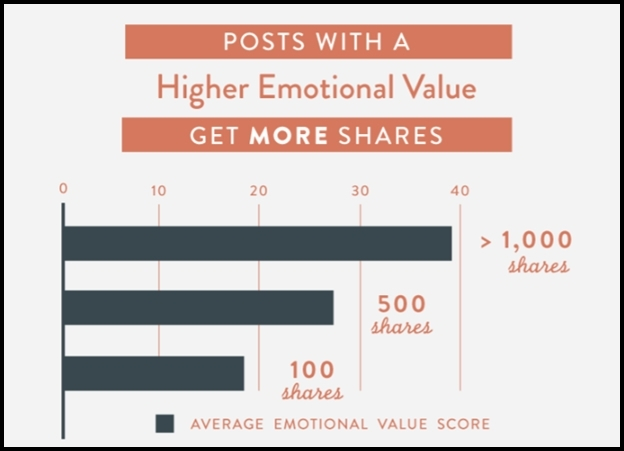
Source: buffer.com
—————————————————————————————————————————————————————–
How to Craft an SEO outreach strategy for B2B success:
Build relationships, leverage data, and create targeted content that resonates with decision-makers.
—————————————————————————————————————————————————————–
SEO Outreach in B2C Digital Marketing
Conversely, in the B2C realm, Search engine optimization outreach serves as a catalyst for engaging with individual consumers, driving brand awareness, and facilitating seamless interactions across diverse consumer segments. Key considerations and B2C SEO strategies for effective search engine optimization outreach in B2C digital marketing include Consumer-Centric Keyword Optimization, User-Centric Content Creation, E-commerce and Local Search engine optimization, Social Media Integration and Influencer Collaboration.

B2C Blogger Outreach Strategies: Engaging Communities and Sparking Conversation
B2C outreach thrives on emotional connection and captivating content. Here are key strategies to spark engagement and build brand love:
1. Interactive Experiences:
- Run contests and giveaways: Partner with relevant bloggers to host product giveaways, photo contests, or user-generated content challenges. This incentivizes interaction and brand awareness.
- Livestream events: Partner with micro-influencers for Q&A sessions, product demonstrations, or behind-the-scenes glimpses. Build a sense of community and excitement.
- Interactive quizzes and polls: Engage audiences with fun quizzes about your products or industry trends. Offer personalized discounts or recommendations based on results.

2. User-Generated Content (UGC):
- Encourage user-generated content: Partner with micro-influencers to create authentic product reviews, tutorials, or lifestyle content featuring your brand.
- Host hashtag campaigns: Encourage user-generated content with branded hashtags and incentives. Showcase the best submissions on your website and social media.
- Run UGC contests: Encourage photo or video submissions showcasing their experience with your brand. Reward creativity and offer exciting prizes.
3. Leverage Social Media Communities:
- Join relevant communities: Engage in discussions, answer questions, and offer valuable insights within relevant online communities and forums. Build trust and brand recognition.
- Partner with community leaders: Collaborate with community moderators or influential members to host AMAs, product demos, or exclusive events. Reach a targeted audience within a trusted space.
- Run community-specific promotions: Offer exclusive discounts or contests targeted towards specific online communities to incentivize engagement and brand loyalty.
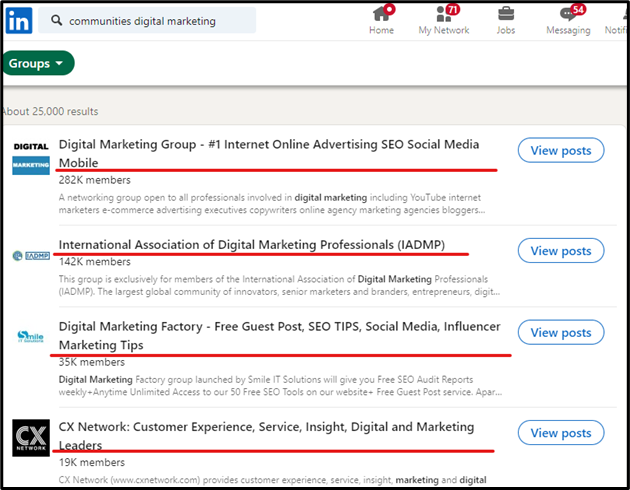
—————————————————————————————————————————————————————–
What is B2C SEO?
B2C SEO optimizes your online presence to attract individual consumers through search engines. Think engaging content, strategic keywords, and mobile-friendliness – all crafted to drive website visits and convert them into customers.
—————————————————————————————————————————————————————–
Common Principles and Best Practices
While the nuances of SEO outreach in B2B and B2C digital marketing are distinct, several common principles and best practices underpin the effectiveness of SEO outreach in both domains, including Content Quality and Relevance, User Experience and Mobile Optimization, Performance Monitoring and Data-Driven Optimization, Adaptation to Search Engine Algorithms and Trends.
Mastering the Double Play: B2B vs. B2C SEO Outreach in 2024
While both aim to build authority and attract leads, B2B and B2C SEO outreach strategies differ due to their unique target audiences and buying journeys. Here’s a quick breakdown:
| Feature | B2B | B2C |
| Target Audience | Decision-makers, businesses | Individual consumers |
| Sales Cycle | Longer, more complex | Shorter, impulse-driven |
| Focus | Building relationships, industry expertise | Brand awareness, emotional connection |
| Platforms | Industry publications, professional networks | Social media, influencer marketing |
| Content | White papers, case studies | Engaging visuals, interactive formats |
| Metrics | Domain authority, backlinks | Brand mentions, social engagement |
Current Trends in SEO Outreach:
Navigating the Ever-Evolving Landscape of SEO Outreach: Expert Insights from 10 Years in the Trenches
Gone are the days of generic, spray-and-pray outreach emails. Today’s SEO landscape demands a sophisticated, data-driven, and personalized approach that builds genuine relationships and resonates with your target audience. Here’s what I’ve learned in my 10-year journey, exploring the key trends shaping the future of SEO outreach:
1. Personalization is King (and Queen):
Forget mass blasting – it’s time to craft messages tailored to individual influencers and their audiences. Consider:
- Researching: Dive deep into their content, interests, and values to find common ground.
- Segmenting: Group influencers by niche, demographics, and engagement levels for targeted pitches.
- Hyper-personalizing: Use dynamic variables to address them by name and reference specific content they’ve created.
The ROI: A study by Yesware found that personalized emails have a 14% higher open rate and a 6% higher reply rate than generic ones.
Real-world example: Buzzsumo, a content marketing platform, saw a 300% increase in outreach success by personalizing pitches with relevant data about influencers’ past shares.
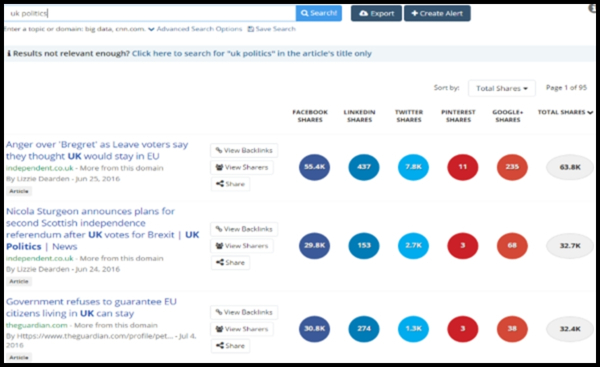
2. Data Drives Decisions:
Don’t gamble on gut feeling, leverage data to identify high-potential targets and track campaign performance. Tools like:
- Buzzsumo: Analyze trending topics and identify relevant influencers.
- Ahrefs: Track competitor backlinks and discover potential outreach partners.
- Google Analytics: Measure traffic sources and identify influencers driving valuable visits.
The stat: Marketing Charts reports that 87% of marketers leverage data analytics to identify marketing opportunities.
Real-world example: SEMrush, a SEO software company, used data to identify relevant podcasts, secured guest appearances, and saw a 40% increase in organic traffic.
3. New Platforms Emerge:
Expand your reach beyond traditional blogs and websites. Consider:
- Podcasts: Guest appearances on relevant podcasts can tap into engaged audiences and build brand authority.
- Social media communities: Engaging with niche groups on platforms like Reddit and Discord fosters meaningful connections and brand advocacy.
- Live video platforms: Platforms like Twitch and YouTube Live offer interactive opportunities to connect with audiences in real-time.
The potential: Social media influencer marketing is expected to reach a $16.4 billion industry by 2025.
Real-world example: Dollar Shave Club partnered with micro-influencers on Instagram, reaching a targeted audience and achieving a 25% increase in sales.
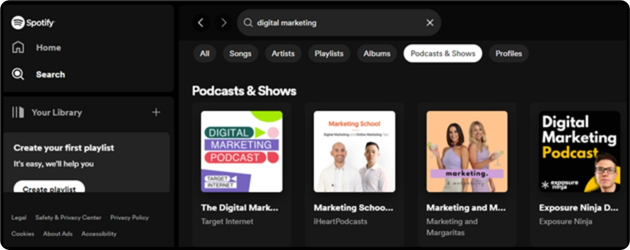
4. Micro-Influencers Make a Mark:
Forget celebrity endorsements, micro-influencers (10k-50k followers) offer higher engagement rates and authentic reach. They:
- Possess specific expertise and resonate with niche audiences.
- Foster trust and connection, making their recommendations more impactful.
- Offer better value for your outreach budget compared to big-name influencers.
The stat: Influencer marketing platform AspireIQ found that micro-influencers generate 6 times more engagement per follower than mega-influencers.
Real-world example: Eos Lip Balm partnered with micro-influencers in the beauty niche, resulting in a 400% increase in website traffic and a 20% rise in sales.
5. Voice Search Optimization:
With voice assistants like Siri and Alexa becoming increasingly popular, optimizing your outreach Search engine optimization strategy for voice search is crucial. Consider:
- Long-tail keywords: Focus on natural language phrases people use in voice searches.
- Structured data: Implement schema markup to improve voice search rankings.
- Content clarity: Create concise and informative content that answers specific questions.
The fact: Gartner predicts that 30% of all web searches will be conducted without a screen by 2020.
Real-world example: The Home Depot optimized its website for voice search, resulting in a 20% increase in voice-driven mobile conversions.
6. Content & Outreach Hand-in-Hand:
Your outreach efforts thrive when backed by high-quality content that resonates with your target audience. Integrate:
- Blog posts: Offer valuable insights and data relevant to influencers’ and their audiences’ interests.
- Infographics and visual content: Grab attention and simplify complex information for better engagement.
- Interactive tools and quizzes: Create experiences that encourage participation and generate data for future outreach.
The synergy: A study by Content Marketing Institute revealed that companies with blogs generate 55% more leads than those without.
Real-world example: Buffer, a social media management platform, created engaging infographics and secured backlinks from high-authority websites
—————————————————————————————————————————————————————–
Ennoble excelling at SEO Outreach for clients!
With 7+ years of digital marketing mastery, Ennoble Technologies crafts powerful B2B SEO strategies & B2C SEO outreach campaigns. Our team, led by a 10+year SEO veteran, delivers results that fuel your growth. Uncover the latest trends and proven SEO strategies to engage your audience and dominate the online space. Partner with Ennoble and turn website visitors into loyal customers today!
—————————————————————————————————————————————————————–
B2B Outreach: Mastering the Complex Game – Leveraging 10 Years of Expertise
B2B outreach is a different beast compared to its B2C counterpart. Longer sales cycles, complex decision-making processes, and the need for trust-building require a strategic and nuanced approach. Here, I’ll draw on my 10 years of experience to equip you with powerful B2B outreach best practices:
Understanding the Key Differences:
- Decision-Making: B2B purchases involve multiple stakeholders with diverse needs and concerns. Understand your target company’s buying journey and identify key decision-makers.
- Relationships Matter: Building genuine connections with individuals, not just titles, is crucial. Focus on providing value, not just pitching your product.
- Content is King: Offer insightful content like white papers, case studies, and industry reports that address specific pain points and showcase your expertise.
Actionable Tips for Success:
1. Research is King:
- Target the right companies: Use tools like ZoomInfo or LeadGenius to identify ideal prospects aligned with your solution.
- Know your decision-makers: Research their backgrounds, interests, and challenges to personalize your outreach.
- Understand their industry: Stay updated on industry trends and challenges to position your message for relevance.
2. Personalization is Key:
- Craft email introductions by name: Avoid generic templates and mention something specific about their work or interests.
- Offer tailored solutions: Highlight how your product/service addresses their unique needs and challenges.
- Go beyond email: Consider personalized LinkedIn messages, thought leadership pieces, or even handwritten notes for high-value targets.
3. Leverage Industry Events and Networks:
- Participate in relevant conferences and trade shows: Network with potential partners and decision-makers.
- Join industry associations and online communities: Build relationships and establish your expertise through thought leadership.
- Speak at industry events: Showcase your knowledge and gain credibility within the target audience.
4. Cultivate Relationships with Media and Influencers:
- Identify journalists and publications covering your industry: Build relationships by offering valuable insights and data.
- Contribute guest articles or industry reports: Gain exposure and establish your brand as a thought leader.
- Partner with relevant influencers: Leverage their reach and credibility to connect with key decision-makers.
5. Data & Analytics: Your Guiding Light:
- Track key metrics: Monitor open rates, click-through rates, and website traffic generated from your outreach efforts.
- Identify what’s working and what’s not: A/B test different subject lines, messaging strategies, and content formats.
- Refine your approach: Use data to continuously improve your outreach campaigns and maximize ROI.
Real-World Success Stories:
Case Study: A B2B SaaS company identified key decision-makers at target companies through LinkedIn research. By sending personalized emails with relevant case studies, they secured a 30% meeting acceptance rate.
Industry Example: A marketing agency built relationships with industry journalists by offering unique data and insights. They secured several media placements that generated qualified leads.
Remember, B2B outreach is a marathon, not a sprint. By implementing these best practices and leveraging my 10 years of experience, you can build genuine relationships, create value, and ultimately turn leads into loyal customers for your B2B business.
Cracking the B2C Code: Engaging Outreach B2C Strategies for Today’s Consumers
B2C outreach is a vibrant dance compared to its B2B counterpart. Shorter sales cycles, emotional triggers, and the need to grab attention demand a dynamic and engaging approach.
Leveraging my 10 years of experience, let’s delve into powerful B2C outreach best practices:
Understanding the Key Differences:
- Emotional Connection: Tap into emotions like excitement, joy, or fear to trigger impulsive desires and encourage action.
- Faster Conversions: B2C purchases often happen quickly, so ensure your outreach is clear, concise, and easily leads to conversion.
- Content is King, But Engagement is Queen: Go beyond informative content; create interactive experiences, user-generated content, and shareable moments.
Actionable Tips for Captivating Your Audience:
1. Master the Social Media Game:
- Engage with your audience: Respond to comments, participate in conversations, and run polls to foster a sense of community.
- Leverage influencer marketing: Partner with relevant micro-influencers who resonate with your target audience for authentic reach.
- Run contests and giveaways: Generate excitement and incentivize user interaction with appealing prizes.
2. Create Content that Sizzles:
- Focus on visuals: Utilize captivating images, videos, and infographics that grab attention and tell a story.
- Go interactive: Implement quizzes, polls, and augmented reality experiences to boost engagement.
- Optimize for mobile: Ensure your content displays flawlessly and is easily consumable on smartphones and tablets.
3. Personalization Matters, Even in the Crowd:
- Segment your audience: Create targeted campaigns based on demographics, interests, and past behavior.
- Use dynamic personalization tools: Address individuals by name and tailor messaging based on their preferences.
- Offer exclusive deals and promotions: Reward loyal customers and incentivize repeat purchases.
4. Data & Analytics: Your Performance Compass:
- Track key metrics: Monitor engagement rates, click-through rates, and conversion rates across different platforms and campaigns.
- Run A/B tests: Experiment with different headlines, images, and calls to action to see what resonates best.
- Refine your approach: Use data to continuously improve your outreach efforts and maximize ROI.
Real-World Success Stories:
Case Study: A clothing brand partnered with micro-influencers in the fashion niche. User-generated content featuring the brand led to a 20% increase in website traffic and a 15% rise in sales.
Industry Example: A food delivery app ran a social media campaign with a personalized quiz to recommend dishes. This interactive experience boosted engagement by 30% and generated valuable customer data.
Remember, B2C outreach is about creating a connection and a conversation. By implementing these best practices and leveraging my 10 years of experience, you can reach your target audience, captivate their attention, and ultimately convert them into loyal brand advocates.
Top SEO Outreach Tools:
Crafting a successful SEO outreach campaign requires the right tools to identify targets, personalize emails, and track results. Here’s a list of top options, both free and paid, categorized by their function:
| Category | Tool (Free) | Tool (Paid) |
| Target Identification | ||
| Buzzsumo | Semrush, SpyFu, Majestic, Similarweb Pro | |
| Ahrefs Backlink Checker | Buzzsumo Pro, Buzzstream | |
| Google Search Console | LinkMiner, BuzzStream Sumo | |
| Social Mention | Ahrefs Content Explorer, SE Ranking | |
| HARO | Pitchbox Guestlist, Traackr | |
| AnswerThePublic | Buzzsumo Influencers, Followerwonk | |
| Reddit Keyword Search | Pitchbox Alerts, Brand24 | |
| Quora Topic Search | Followerwonk Pro, Mention | |
| Email Personalization | ||
| Gmail Merge | Mailshake, Pitchbox, Voila Norbert | |
| Hunter | Respona, Pitchbox Email Finder | |
| MailChimp (up to 2,000 contacts) | Snov.io, ContactOut | |
| Streak for Gmail | Outreach.io, Saleshandy | |
| Boomerang for Gmail | Klout, Buzzsumo Influencers | |
| Content Creation & Tracking | ||
| Canva | Buzzsumo Sumo, Buffer, Similarweb Pro | |
| Google Analytics | Buzzsumo Pro, Pitchbox Insights | |
| Piktochart | Visme, Lumen5 | |
| Unsplash | Freepik, Storyblocks | |
| Animoto | InVideo, Wideo | |
| Google Trends | SEMrush Content Assistant, Ahrefs Content Ideas | |
| Relationship Building | ||
| LinkedIn, Twitter, HARO | Pitchbox Guestlist, Brand24, Buzzsumo Influencers | |
| Facebook Groups | Followerwonk Pro, Traackr | |
| Reddit Communities | Buzzstream, LinkMiner | |
| Quora Spaces | Ahrefs Alerts, SEMrush Brand Monitoring | |
| Discord Servers | Pitchbox Community, Buzzsumo Connect | |
| Online Events & Webinars | Traackr Discover, Buzzsumo Events | |
| Podcast Appearances | Podchaser, Matchmaker.fm |
Unlock the Power of Blogger Outreach: Turn Social Likes into Leads!
- Facebook:
Turn likes into leads! Unlock powerful B2B & B2C blogger outreach strategies & convert 70% of website visitors with free & paid tools. Get the insider tips in our blog! #SEO #leadgeneration #searchengineoptimization - Instagram:
Convert clicks to customers! Discover killer B2B & B2C blogger outreach hacks & skyrocket your lead generation with free & paid tools. Link in bio! #SEOtips #businessgrowth - LinkedIn:
Boost your sales funnel! Learn 70% conversion secrets via B2B & B2C blogger outreach & power up your lead generation with free & paid tools. Read our blog now! #B2Bmarketing #C2Cmarketing
—————————————————————————————————————————————————————–
Interesting fact – Did you know?
The average salary for an SEO outreach specialist in the United States is over $70,000 per year.
—————————————————————————————————————————————————————–
FAQs about SEO outreach specialists
Q. What skills do I need to be an SEO outreach specialist?
A. You will need strong communication and writing skills, as well as a good understanding of Search engine optimization and content marketing. You should also be able to use data analysis tools and be comfortable building relationships with people online.
Q. What is the career outlook for SEO outreach specialists?
A. The career outlook for Search engine optimization outreach specialists is very positive. The demand for SEO professionals is expected to grow in the coming years, as businesses increasingly recognize the importance of online marketing.
Q. How can I get started as an SEO outreach specialist?
A. There are a number of ways to get started as an SEO outreach specialist. You can take online courses or attend workshops to learn the skills you need. You can also start by building your own website or blog and practicing your outreach skills by trying to get backlinks from other websites.
Boost Your SEO with Influencer Outreach: The Complete Guide to Landing IoT Guest Posts
Targeting an IoT Influencer for a Guest Post Backlink: Step-by-Step Guide
Target: John Doe, Sr. Vice president of MagicCloud
Tools:
- Buzzsumo: Identify influencer’s best guest posts.
- Hunter: Find target’s email address.
- Mailshake: Personalize and send outreach emails.
Steps:
1. Research & Identify:
- Use Buzzsumo to find the influencer’s most popular guest posts on IoT topics.
- Analyze the posts for insights about their preferred content style and audience.
2. Craft a personalized pitch:
Use Hunter to find the influencer’s professional email address (avoid generic info@ emails). Draft a personalized email using Mailshake.
Here’s a sample script:
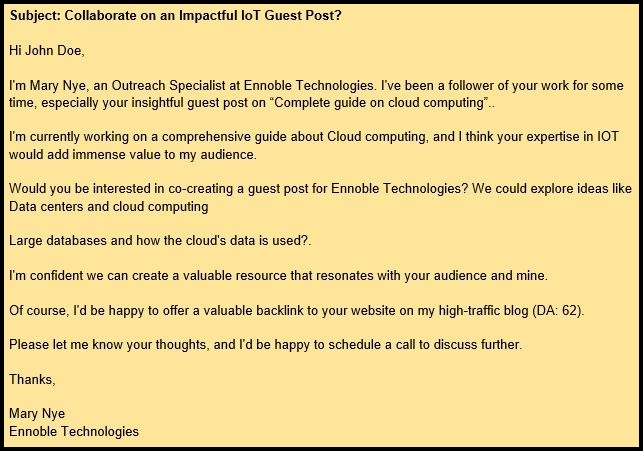
3. Personalize and Send:
- Use Mailshake’s personalization features to insert the influencer’s name, specific post title, and other relevant details.
- Send the email at an appropriate time, considering their location and time zone.
4. Follow Up:
- If you don’t receive a response within a week, send a courteous follow-up email using Mailshake.
- Be respectful of their time and avoid being pushy.
5. Negotiate & Secure Guest Post:
- If they express interest, discuss the topic, content outline, and desired backlink placement.
- Collaborate on creating a high-quality guest post that benefits both your audiences.
Remember:
- Focus on offering value and building a genuine connection.
- Respect the influencer’s time and expertise.
- Be patient and persistent, but not pushy.
- By following these steps and utilizing the recommended tools, you can increase your chances of securing a valuable backlink on an influential IoT blogger’s website.
Conclusion
In essence, the role of SEO outreach in both B2B and B2C digital marketing is rooted in enhancing online visibility, driving relevant traffic, and fostering meaningful connections with target audiences. By tailoring search engine optimization outreach strategies to the unique dynamics of B2B and B2C markets, organizations can position themselves for sustained success, drive engagement, and achieve business objectives within their respective domains. Whether engaging with businesses or individual consumers, the strategic deployment of search engine optimization outreach remains fundamental to achieving digital marketing success across diverse sectors.
Also Read: Mobile Optimization: Crucial for On-Page SEO Success – Ennoble Technologies
Also Read: On-Page SEO vs. Off-Page SEO: Which Matters More? – Ennoble Technologies
Also Read: Mastering On-Page SEO: Practical Tips & Tricks – Ennoble Technologies
Also Read: 10 On-Page SEO Mistakes You Must Avoid – Ennoble Technologies
Unlocking the Potential: Paid Advertising Strategies for Maximum Impact
Understanding the Power of Paid Advertising
Paid advertising has become an indispensable tool in the digital marketing landscape. It’s a strategic approach that enables businesses to reach their target audience effectively, garnering immediate visibility and engagement. When executed correctly, paid advertising can yield substantial returns on investment (ROI) and significantly impact brand growth.
The Evolving Dynamics of Paid Advertising
In recent years, the realm of paid advertising has witnessed a remarkable evolution. Platforms like Google Ads, social media channels (such as Facebook, Instagram, and LinkedIn), and other digital networks have provided diverse and sophisticated avenues for businesses to promote their products or services. With each platform offering distinct ad formats and targeting options, crafting a tailored strategy for maximum impact has become both an art and a science.

Crafting a Comprehensive Paid Advertising Strategy
- Defining Clear Objectives: Establishing precise goals is the cornerstone of any successful paid advertising campaign. Whether it’s driving website traffic, boosting sales, or enhancing brand awareness, clarity in objectives guides the entire strategy.
- Audience Segmentation and Targeting: Understanding your audience demographics, behaviors, and preferences is pivotal. Leveraging this insight allows precise targeting, ensuring your ads reach those most likely to convert.
- Ad Content and Creatives: Compelling ad content that resonates with the audience is paramount. Utilize persuasive copy, captivating visuals, and engaging CTAs (Call to Actions) to drive user action.
- Optimizing Landing Pages: Ensure that the landing pages your ads direct to are aligned with the ad content and offer a seamless user experience. Optimized landing pages increase conversion rates.
- Monitoring and Analysis: Continuous monitoring and analysis of ad performance provide invaluable insights. Metrics like click-through rates (CTR), conversion rates, and cost per acquisition (CPA) should guide ongoing refinements.
Benefits of a Well-Crafted Paid Advertising Strategy
A strategically devised paid advertising campaign presents a multitude of benefits for businesses:
- Immediate Visibility: Unlike organic methods, paid advertising delivers immediate visibility to the target audience, expediting brand recognition and exposure.
- Precise Targeting: Detailed audience segmentation enables precise targeting, ensuring that ads are shown to those most likely to convert, optimizing ad spend.
- Measurable ROI: With robust analytics tools, measuring the effectiveness of paid campaigns is precise. This data-driven approach allows for continuous refinement and improvement.
- Enhanced Brand Awareness: Consistent visibility across platforms aids in strengthening brand awareness and recall among the audience.
Key Takeaways
Crafting an effective paid advertising strategy involves a meticulous blend of data analysis, creativity, and continuous optimization. Understanding your audience, setting clear objectives, crafting compelling content, and vigilant monitoring are vital components that contribute to maximum impact.
Harnessing the Potential of Google Ads
Google Ads stands tall among the diverse platforms available for paid advertising. Its expansive reach and diverse ad formats make it a powerhouse for businesses aiming to amplify their online presence.

Ad Types and Customization
Google Ads offers various ad types tailored to different business goals:
- Search Ads: Displayed at the top of search engine result pages, these ads target users actively searching for specific keywords.
- Display Ads: These visually appealing ads appear across the Google Display Network, spanning a wide array of websites and apps.
- Video Ads: Capitalize on the popularity of YouTube and engage users through compelling video content.
- Shopping Ads: Ideal for e-commerce, these showcase product images, prices, and businesses’ names right at the top of Google searches.
Customization within Google Ads allows for precise targeting, scheduling, and budget allocation. Leveraging features like location targeting, ad extensions, and remarketing can significantly enhance ad performance.
Maximizing Social Media Platforms
The landscape of social media platforms offers a diverse range of opportunities for paid advertising:
- Facebook Ads: With its extensive user base and detailed targeting options, Facebook Ads enable businesses to reach specific demographics effectively.
- Instagram Ads: Leveraging visually engaging content, Instagram Ads tap into the platform’s highly visual nature, capturing user attention.
- LinkedIn Ads: Ideal for B2B marketing, LinkedIn Ads offer precise targeting options based on job titles, industries, and professional demographics.
Each social media platform provides unique ad formats and targeting options. Crafting tailored ad campaigns optimized for each platform maximizes audience engagement.
Budget Allocation and Optimization
A crucial aspect of paid advertising lies in effective budget allocation and continuous optimization. Distributing budgets across different platforms and ad types based on performance analysis is key. Constantly testing ad variations, refining targeting parameters, and optimizing landing pages contribute to maximizing ROI.
Understanding Your Audience: Key to Success
Before diving into any advertising venture, comprehending your audience is pivotal. Conduct thorough research to identify their demographics, preferences, and behaviors. Utilize analytics tools to glean insights and craft targeted campaigns that resonate with your audience’s needs and interests. Aligning your message with their desires enhances engagement and conversion rates.
Crafting Compelling Ad Copies
Captivating ad copies play a crucial role in capturing audience attention. Craft compelling, concise, and persuasive copies that highlight your unique value proposition. Incorporate relevant keywords naturally to boost search visibility and entice potential customers. A clear and compelling call-to-action (CTA) prompts users to take the desired action, driving conversions.

Harnessing the Power of Visuals
In the realm of paid advertising, visuals wield immense influence. Utilize captivating images, videos, or infographics that complement your message. Visual content not only grabs attention swiftly but also enhances comprehension and retention. Ensure consistency in branding across visual elements to reinforce brand identity and foster trust.
Strategic Bid Management and Budget Allocation
Optimizing bids and allocating budgets strategically can significantly impact your campaign’s performance. Employ data-driven insights to adjust bids based on ad performance, ensuring maximum ROI. Allocate budgets wisely across platforms and campaigns, focusing on high-performing channels to maximize impact.
A/B Testing for Continuous Improvement
Continuous refinement is key to sustained success in paid advertising. Implement A/B tests to experiment with various elements such as headlines, visuals, or CTAs. Analyze the results meticulously to identify the most effective components and iterate for ongoing improvement.
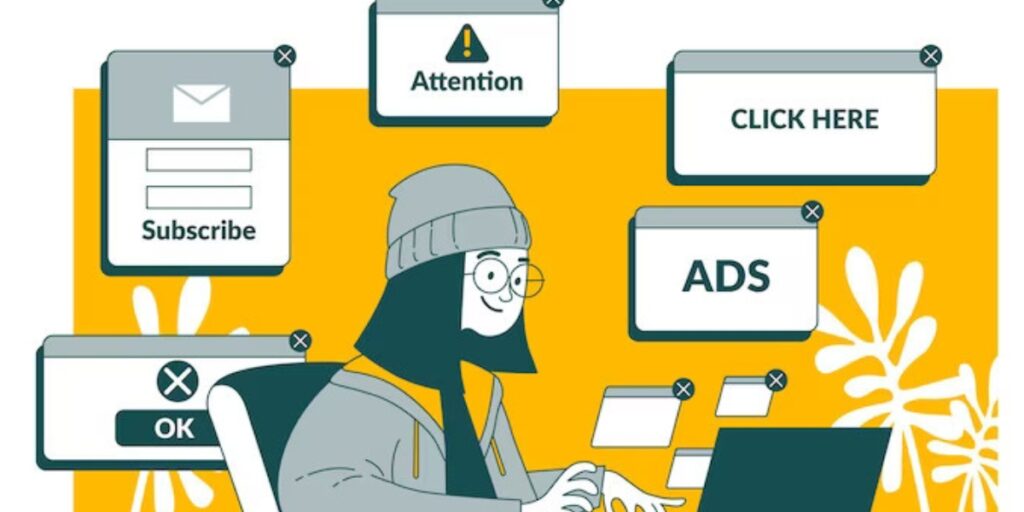
Embracing Diverse Advertising Platforms
Diversifying your advertising platforms mitigates risk and expands your reach. Explore diverse platforms like Google Ads, social media ads, or native advertising to tap into varied audience segments. Tailor your approach based on platform-specific nuances to optimize results.
Tracking and Analyzing Performance Metrics
Monitoring and analyzing performance metrics are fundamental to refining your strategies. Track key metrics such as click-through rates, conversion rates, and return on ad spend (ROAS). Use these insights to fine-tune your campaigns, emphasizing high-performing aspects for optimal results.
Conclusion
Mastering paid advertising strategies demands a blend of creativity, data-driven insights, and continuous optimization. By understanding your audience, crafting compelling content, leveraging visuals, and refining strategies based on data analysis, you can propel your advertising campaigns to new heights of success. Embrace experimentation, adapt to changes, and stay abreast of industry trends to stay ahead in the competitive landscape of paid advertising.
Also Read: A/B Testing: Fine-Tune Your Ads for Optimal Results – Ennoble Technologies

